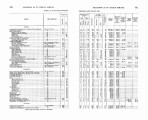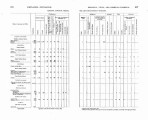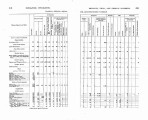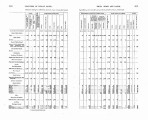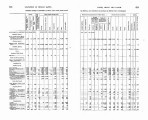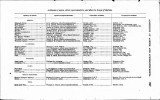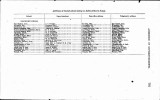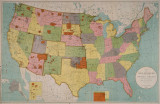| OCR Text |
Show COIdMIEISIONER OF INDIAN AFFAIFS. 127 wagons; and when the firing began they all tried to get away as best they could, tsking wives and children with them and leaving wagons and other effects behind. The four Indians killed were the 11-year-old boy; Black Kettle, 58 years old; Charles Smith, 38, and Clear, 52 years old. The two wounded were the wife of Charles Smith, who afterwards died, and Last Bear, an old man, who was shot through the back. Some days later 9 of the Indians were arrested and charged with the murder of Sheriff Miller and deputy. They were tried at Douglas, Wyo., November 13, 1903, and speedily acquitted, although the 9 or 10 witnesses who testified against them all belonged to the sherips posse. This trial or preliminary hearing was held in a justice court, before H. R. Daniels, justice of the peace for Converse County, Wyo. On the day following the encounter, the governor of Wyoming telegraphed this Office that a sheriff and a member of his posse had been killed by Indians of the Pine Ridge Agency, who were reported to have been illegally hunting on Lightning Creek, and asked that they be apprehended through the Indian agents or by the military anthorities, and delivered to the proper authorities for trial. Later still more alarming reporta were receivedas to the threatening attitnde of the Indians, and this Office at once telegraphed the agents of the Sioux to take measures to prevent any of their Indians leaving their reservations and going to the scene of trouble. The Indian agent of the Pine Ridge Agency was at the same time telegraphed to proceed to Newcastle and thoroughly investigate the affair and bring the real facts to light. The Officealso recommended that the Attorney- General direct the district attorney to make an investigation, and that an inspector of the Interior Department be sent out to cooperate with him. Mr. T. F. Burk, Unitedstates district attorney, and Special Indian 'Agent Charles S. McNichols, were assigned to the duty of making the examination, and from their reporta the followingis clear: The Indians were lawfully absent from their reservation; it does not appear that they were guilty of a direct violation of the game laws, though the evidence shows that they had bought fresh skins and could be prose-cuted for having the same in their possession; the warrant issued for their arrest charging a violation of the game laws was for but two per-sons, whereas the sheriff attempted to use it for the arrest of some 20 or 25 Indian men, besides women and children; at the time of the shooting the Indians were not in a threatening or menacing attitude, whereas the shes and his posse were the aggressors; and under the conditions the Indians were legally justified in resisting arrest, but not to the extent of using deadly weapons, unless the sheriff's posse first used their guns, which seems to have been the case. In the opinion |






















































































































































































































